The Korean Peninsula was in the middle of all-out war in the year A.D. 400. King Gwanggaeto (r. 391-413) of Goguryeo, a figure remembered as a great conqueror, dispatched his army to aid Silla against the alliance of the Baekje Kingdom, various Japanese tribes and the mini-states that made up the Gaya Confederacy.
Gaya consisted of several smaller realms that flourished around the Nakdonggang River, the Namgang River and the Hwanggang River in the southern part of the Korean Peninsula. According to many historical accounts, soldiers from Alla (안라, 安羅) were involved in the broader war between Goguryeo and Silla against Gaya, Japanese tribes and the Baekje Kingdom. Alla is mentioned in a stele King Gwanggaeto erected in the 5th century, and also in the “Nihon Shoki,” a Japanese historical text written in the 8th century. Alla nation, also known as Aragaya, which is today’s Haman-gun County in Gyeongsangnam-do (South Gyeongsang Province). Finally, according to the “Records of the Three Kingdoms” (삼국지 위서 동이전, 三國志 魏書 東夷傳) a Chinese historical text from the 200s, the nation that became Aragaya was also referred to as the Anya Nation (안야국, 安邪國).
Aragaya was an agrarian society that flourished on the wide plains around the mouth of the Namgang River. The Namgang River flows through what were Aragaya lands and is a tributary to the Nakdonggang River, the largest river in the southern part of the peninsula. This geography has made it easier for the kingdom to meet and trade with neighboring kingdoms in what are today China and Japan. Also, Aragaya exported a great amount of iron and copper to various Japanese kingdoms, accruing much wealth.
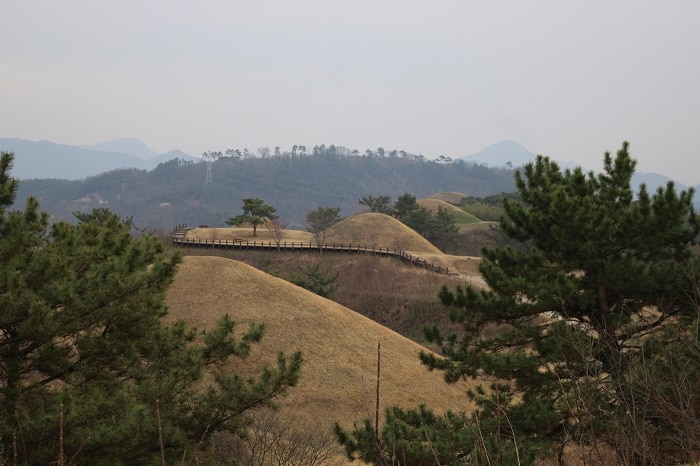
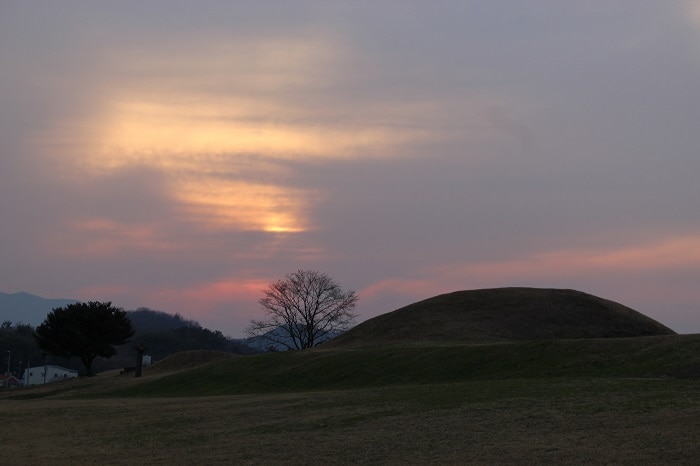
The Malisan Tumuli, or barrows, in Haman-gun County in South Gyeongsang Province remain as they were during the Aragaya period (42-559).
Behind the Haman-gun County offices in Gaya-eup sit a number of ancient tumuli, or barrows. The tomb complex sits some 40 to 70 meters above the city, and stretches about half a kilometer from east to west and for two kilometers from south to north. Referred to as the Malisan Tumuli, the tomb complex was for the ruling classes of Aragaya. The tumuli are presumed to have been built between the 0s and the 500s. Up until today, a total of 37 tombs have been found, but archeologists expect that there could be more than 1,000 tombs that have lost their original form with age.
Archaeological research into the Malisan Tumuli officially began in the late 1980s. It wasn’t easy to get a full picture of the region’s ancient history. Researchers at the time didn’t have the professional skills required for such excavations, and many of the tombs had been robbed throughout the centuries. In modern times, the peninsula itself went through much turmoil with colonization and then the Korean War (1950-1953). The archeological team from the museum at Changwon National University officially began its first excavation in 1986 and through to 2009 has carried out 18 such digs. There are around 8,000 excavated items, including 2,100 earthenware pieces of pottery, 2,500 iron items and 3,400 accessories such as jewelry. The ancient kingdom of Aragaya’s time capsule is now finally being opened in the 21st century.
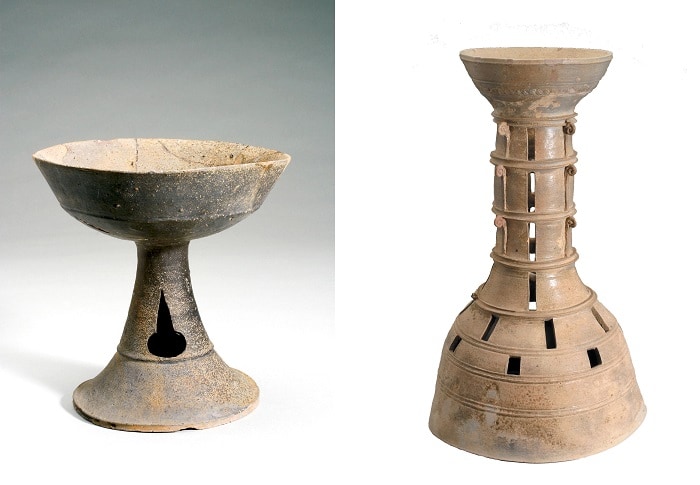
Aragaya was a kingdom of potters. Many of its tombs evidence a range of earthenware. Researchers have found that much of the pottery had to have been created in a kiln by professional potters. One of the iconic Aragaya relics is a style of perforated hourglass items with a supposed flame-shaped hole on the side, believed to have been produced between the 400s and 500s. Most of the earthenware has been excavated from around Haman-gun County, and also from the neighboring regions of Changwon, Masan, Uiryeong and Jinju in the western parts of South Gyeongsang Province. Some items have also been found near Geochang in South Gyeongsang and near Gimcheon, Gyeongju and Busan in North Gyeongsang province, and as far afield as Kinki in Japan. The archaeological evidence suggests that Aragaya was active in communicating and trading with neighboring kingdoms. The total number of earthenware items with the “flame holes” found to date is 150, and no less than 100 of them were excavated near Haman.
Relics that represent Haman include the flame-shaped perforated pottery items (불꽃무늬토기, 火焰形透窓土器) and the chariot wheel-shaped pottery items (수레바퀴모양토기, 車輪形土器), as well as various iron items, including swords with a round pommel and a double dragon pattern (쌍용문 둥근고리큰칼, 雙龍文 環頭大刀), helmets, pieces of armor, armor for a horse’s head, armor for a horse’s body and a saw-toothed knife with a bird pattern (새모양장식 미늘쇠, 鳥形飾 有刺利器).
Since 2013 when it first submitted its application, the Cultural Heritage Administration (CHA) has worked to register both the Malisan and Gimhae tumuli clusters on UNESCO’s Tentative List of world heritage items. The CHA has faith that these items are worthy elements of the world’s cultural heritage. The tombs have substantive evidence to prove the existence of the ancient civilization of Gaya some 1,500 years ago. This history is considered to have both cultural and historical value to people today, as it shows how the ancient kingdoms of Northeast Asia developed and how they were actively involved in both physical and cultural exchanges with each other. The sites have also been recognized for their well-preserved original formations.
On December 11, 2013, the Gaya tumuli in Gimhae and Haman, formally jointly known as the Gaya Tumuli of Gimhae-Haman, were added to UNESCO’s Tentative List of world heritage items. They are now ready to be enjoyed by more and more people from around the world.
By Wi Tack-whan, Lee Seung-ah
Photos: Wi Tack-whan, Haman Museum
Korea.net Staff Writers
whan23@korea.kr
* How to get to the Malisan tumuli complex
It’s centrally located in Gaya-eup. It’s easier to get to the tumuli from the Haman-gun County offices or from the Haman Museum. You will arrive either at Haman Station, at the Haman Intercity Bus Terminal or at the Haman Interchange along the Namhae Expressway.
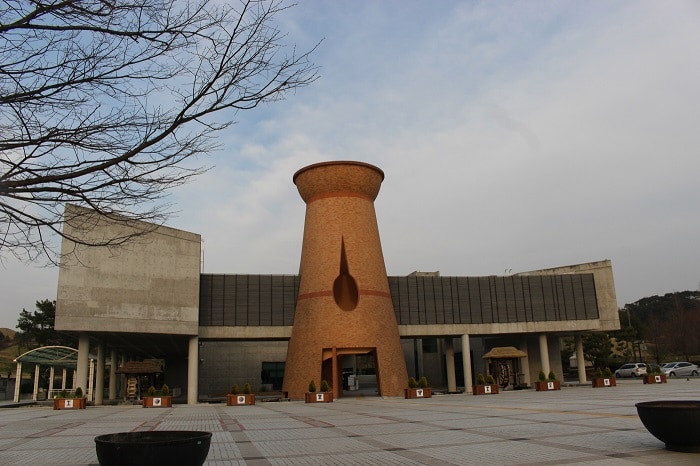
Pictured is the Haman Museum, opened in 2003. It has on display a wide variety of ancient relics, covering the Stone Age through to Korea’s Three Kingdoms period (57 B.C.-A.D. 668). Most of the space is dedicated to relics from the Gaya Confederacy (42-532). The giant replica of a piece of pottery with a ‘flame mark’ is built at the entrance to the museum and represents Aragaya, one of the smaller kingdoms that was part of the confederacy.
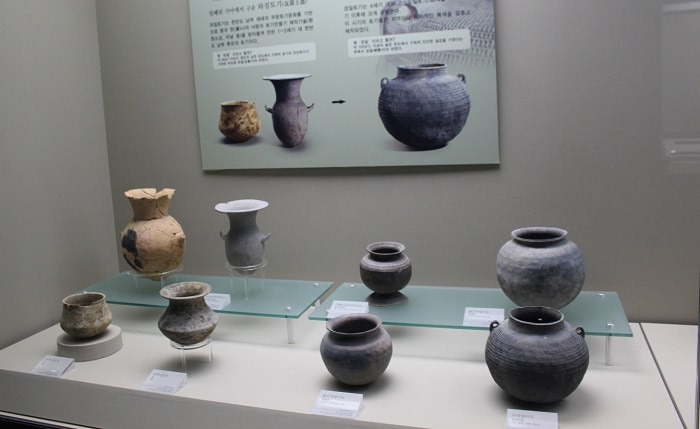
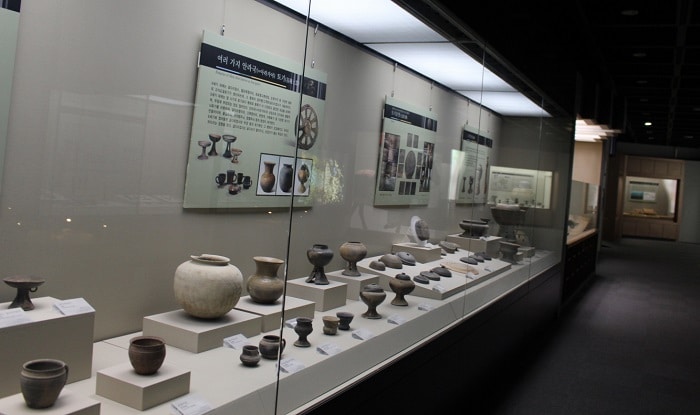
A wide variety of pottery items are on display at the Haman Museum.

Pictured are saw-toothed knives produced during the Gaya period (42-532). They were used as weapons to cause horseback-mounted enemies to fall to the ground. They were also used during ritual ceremonies.
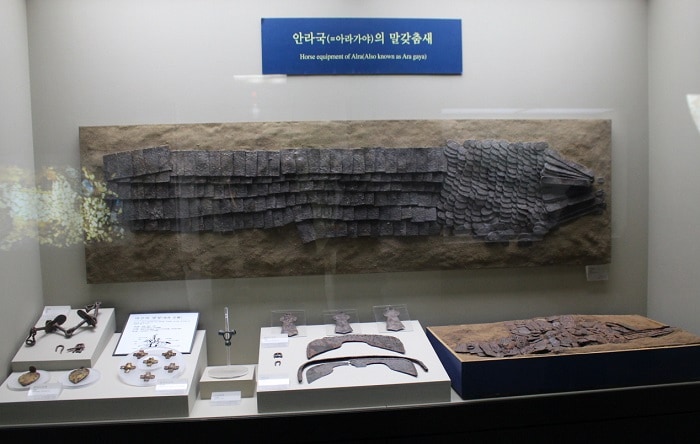

Pictured is a piece of horse armor from the 400s. It was excavated from one of the Malisan tumuli in June 1992. It is one of the best-preserved such relics, and shows the outstanding metalsmithing skills that existed in Aragaya.
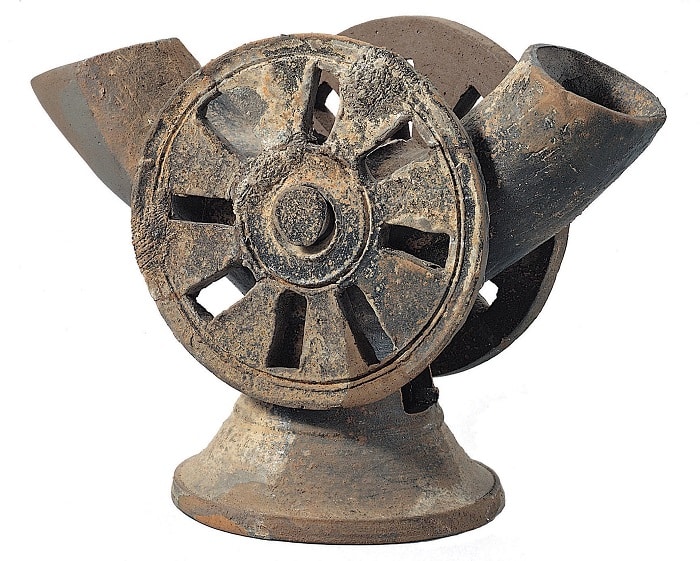
Pictured is a piece of pottery with a wheel pattern. It is believed that it was used to hold alcohol and other beverages during ritual ceremonies. It would also help the souls of the dead enter the afterworld.






![[102nd March First Independence Movement Day] American journalist’s Seoul home to be opened to public](https://gangnam.com/file/2021/03/usr_1614255694426-218x150.jpg)
















